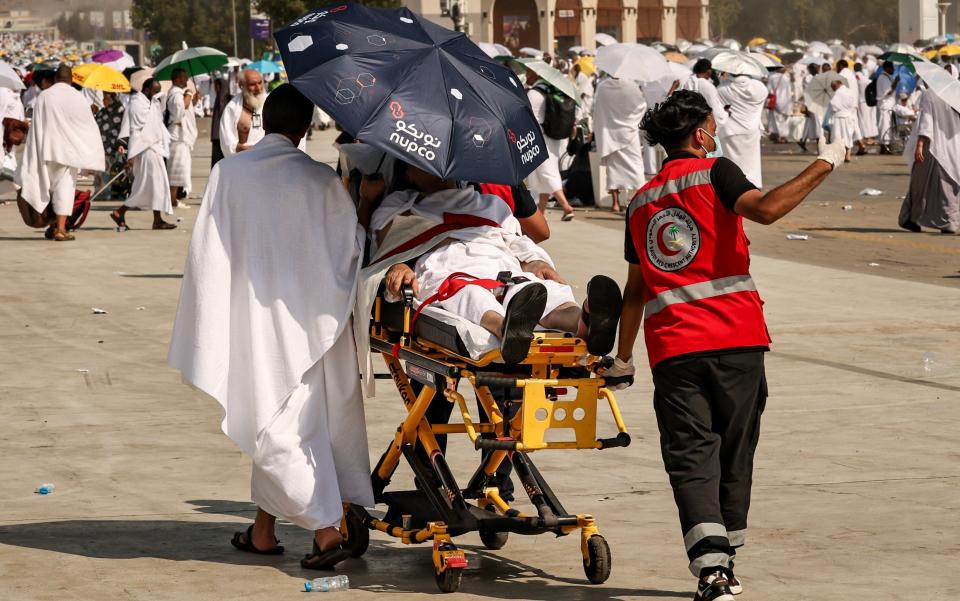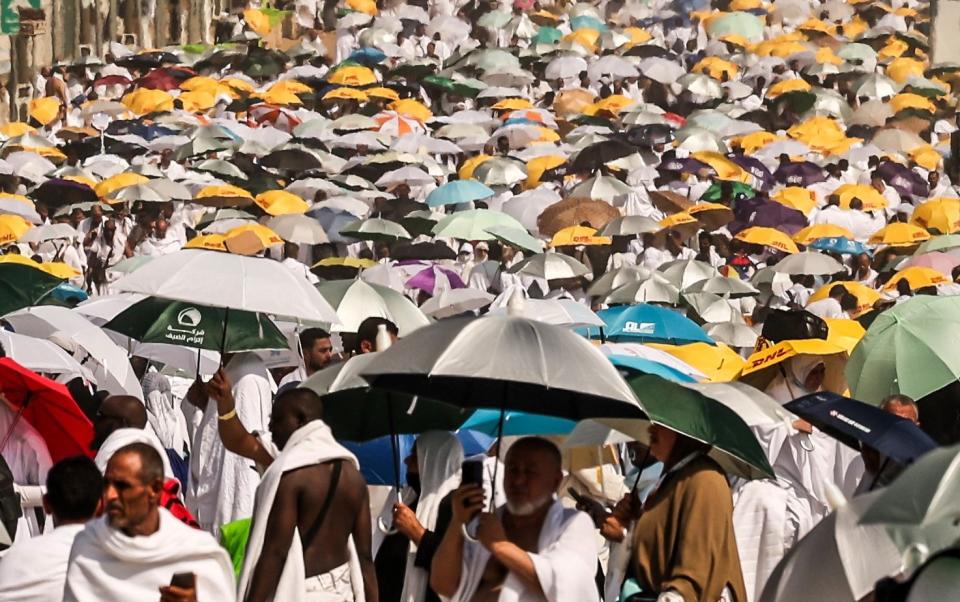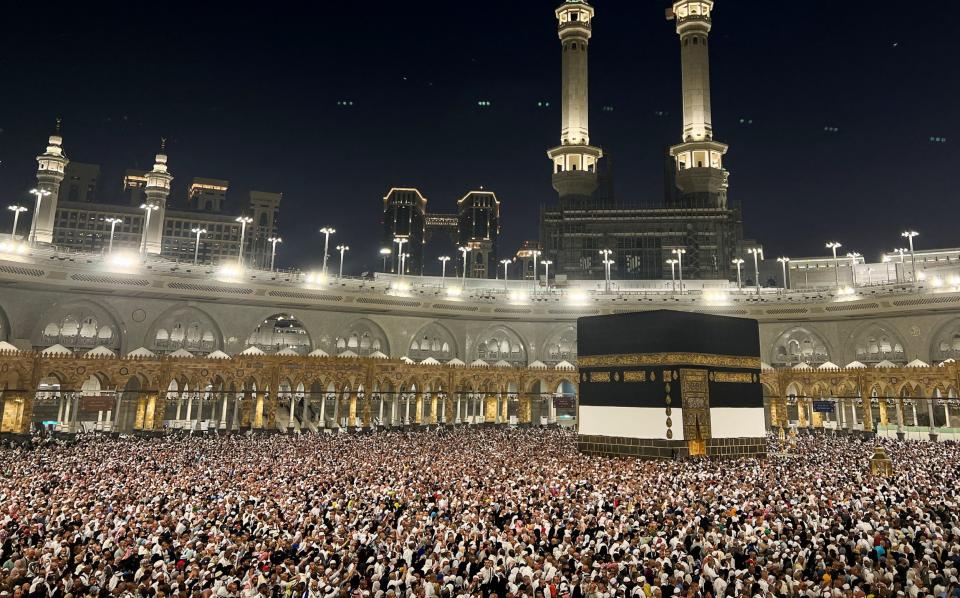Saudi Arabia shuts pilgrims out of air-conditioned areas as more than 1,000 die in extreme heat
Saudi Arabian officials shut illegal pilgrims out of air-conditioned rest areas in Mecca during extreme heat that killed more than 1,000 people on hajj.
More than half of the deaths were among unregistered worshippers who had not bought costly permits for the annual pilgrimage, which all Muslims with the means are encouraged to complete at least once.
The death toll from this year’s hajj exceeded 1,000, diplomats said, as temperatures hit 125.2F (51.8C) in Mecca this week.
“People were tired after being chased by security forces before Arafat day. They were exhausted,” one Arab diplomat said on Thursday, referring to Saturday’s day-long outdoor prayers that marked the hajj’s climax.

Saudi authorities reported clearing hundreds of thousands of unregistered pilgrims from Mecca earlier this month, but many still participated in the main rites which began last Friday.
Tens of thousands of pilgrims attempt to perform the hajj, which involves rituals performed in the summer heat, through irregular channels every year because they can’t afford the official permits.
Without official permits, they were not able to access air-conditioned spaces provided by Saudi authorities for the 1.8 million authorised pilgrims to cool down after hours of walking and praying outside.
Friends and family members have been searching for missing pilgrims. They searched hospitals and pleaded online for news, fearing the worst during the scorching temperatures.
Footage on social media showed bodies on the streets and one abandoned on the pavement covered with a sheet of metal. Other videos showed shrouded corpses lined up to be removed.



One witness said bodies lay on the side of the road near Mina, just outside Mecca, covered with the white ihram cloth – a simple garb worn by pilgrims – until medical vehicles arrived.
Saudi Arabia has not provided information on fatalities, although it reported more than 2,700 cases of “heat exhaustion” on Sunday alone.
In one clip shared on social media, a pilgrim blamed the “extremely poor management by the Saudi government” for the chaotic scenes.
“Ambulances are just standing there doing nothing,” he said in the film shot in Mina, which is five miles from Mecca and is famous for its tents housing pilgrims during the pilgrimage.
He said there had been no buses or taxis, which forced pilgrims to walk on foot through the oven-like temperatures.
Wilayet Mustafa, a Pakistani pilgrim, said: “It was so harsh and the people cannot bear that type of heat.”

Carl-Friedrich Schleussner, a scientific advisor at German institute Climate Analytics, believes the climate crisis is one of the reasons for the heat at the site worsening.
“The hajj has been conducted in a certain way for more than 1,000 years now, and it’s always been a hot climate but… the climate crisis is adding to the severity of the climate conditions,” said Mr Schleussner.
Saudi Arabia’s extreme heat comes as deadly heatwaves scorch cities in other continents in the Northern Hemisphere.
Blistering high temperatures
Countries around the Mediterranean have endured another week of blistering high temperatures that have contributed to forest fires from Portugal to Greece and along the northern coast of Africa in Algeria, according to the US National Oceanic and Atmospheric Administration’s Earth Observatory.
In Serbia, meteorologists forecast temperatures of around 104F (40C) this week as winds from North Africa propelled a hot front across the Balkans. Health authorities declared a red weather alert and advised people not to venture outdoors.
Europe this year has been contending with a spate of dead and missing tourists amid dangerous heat. A 55-year-old American was found dead on the Greek island of Mathraki, police said on Monday – the third such tourist death in a week.
A heat dome occurs when a strong, high-pressure system traps hot air over a region, preventing cool air from getting in and causing ground temperatures to remain high.

